Say it With Flowers
- Kaitlin Simpson
- Feb 14, 2023
- 6 min read

Nothing quite says "I love you" like a bouquet of flowers. To many, the delicate beauty, sweet aroma, and fleeting nature of flowers seems the perfect encapsulation of idyllic romantic love. It is this symbolic power that transforms flowers into one of the staples of any Valentine's Day celebration.
Indeed, today's Valentine's Day celebrations are a commercial affair with consumers in the U.S. spending upwards of $26 billion on Valentine's gifts this year. Flowers hold an important place within the Valentine's market. Of those planning to buy gifts for those they love, almost 40% will purchase flowers. As such, this celebration of romantic love is a huge event for the cut flower industry, with lovers spending over $2.3 billion on flowers for Valentine’s Day each year.
But why flowers?
Flowers have not always been a top Valentine’s Day seller. In fact, in the holiday’s 600-year history, flowers only became popular in the last 100 years. February 14th first became associated with romantic love during the time of medieval English poet, Geoffrey Chaucer. In a poem called Parlement of Foules, written around 1381, Chaucer cited this February day as the moment birds first begin to select their mates for the year. Following the example of these birds, humans soon began to celebrate February 14th as a day of love as well.

Yet, for the first several centuries of celebrating romance on Valentine’s Day, lovers did not gift each other flowers. Rather, for the wealthy, it became a day to give expensive gifts and throw lavish parties. For those of lesser means, Valentine’s Day celebrations consisted of parlor matchmaking games such as pulling the names of potential lovers out of a bowl or attempting to predict whether your crush loved you back. As for presents, men often gifted a pair of gloves to their loves or while couples exchanged elaborate Valentine’s Day cards containing poetry and love notes.
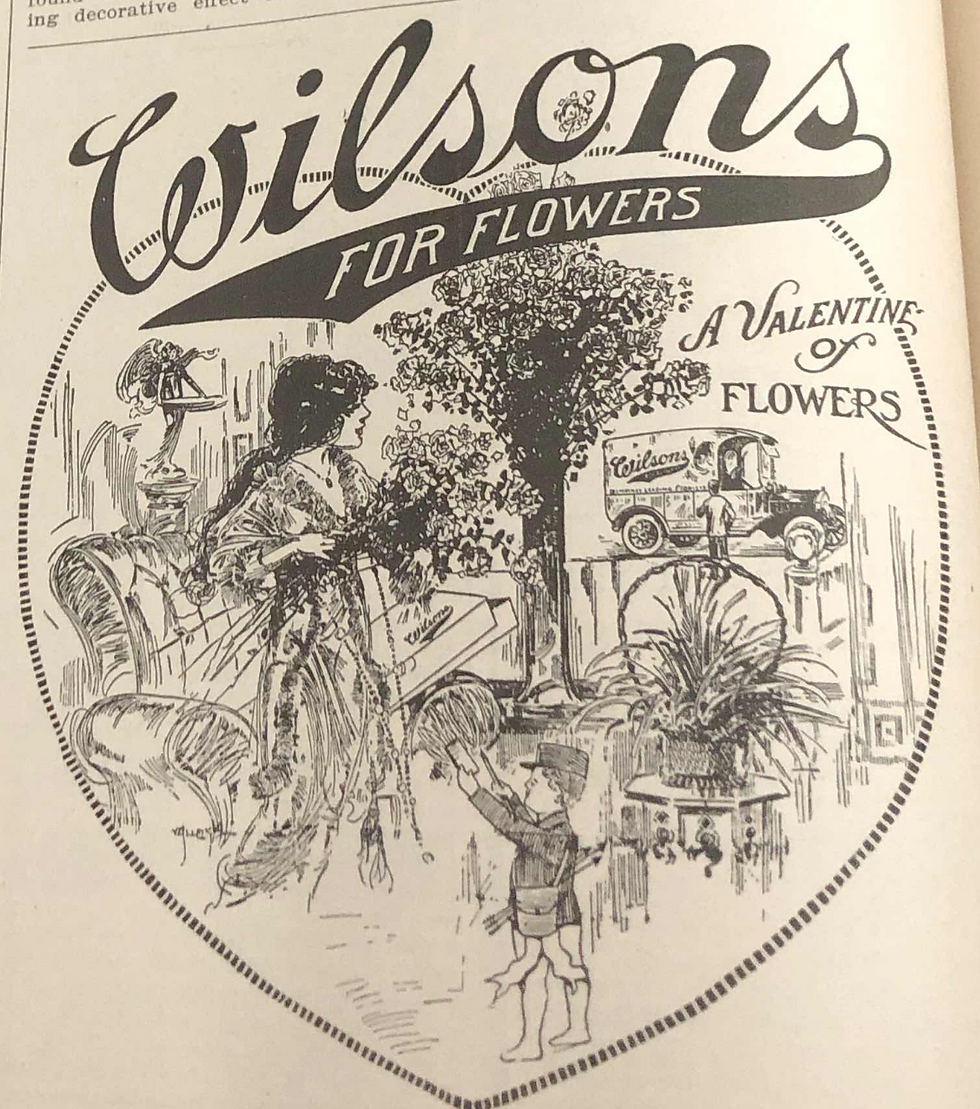
It wouldn’t be until the early years of the 20th century that flowers would become a go-to gift for Valentine’s lovers. Around 1901, younger men began to feel like they needed to do more than gift cards and poorly written poems to their sweethearts. Violets soon bloomed into popularity, both because they were available in early February and because they were relatively cheap. Men would gift these little flowers to their partners, often laid out in a heart shaped box or a corsage made up of anywhere between one to three hundred individual blooms.
With the sales of Valentine’s flowers on the rise, retail florists were bound to take notice. And notice they did. Florists across the United States began peppering local newspapers with Valentine’s Day flower advertisements. To sell their flowers, these florists played on gendered stereotypes that linked the beauty, aroma, and delicacy of a blossom to romantic notions of love, affection, and purity.
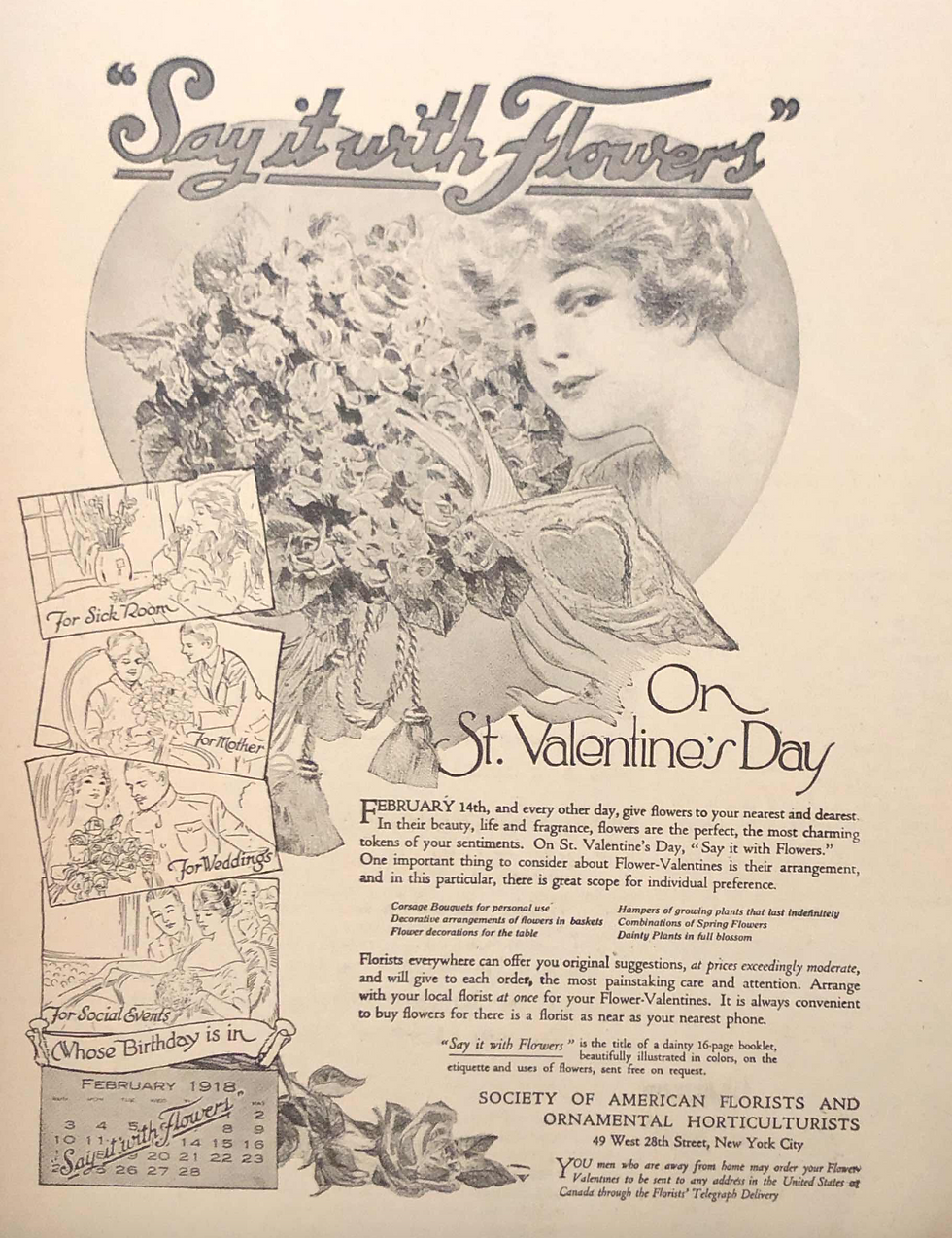
One such advertisement came through the “Say it With Flowers” campaign of 1918. Through this national advertising effort, florists plastered the "Say it With Flowers" slogan on advertisements, windows, boxes, poems, and short stories circulated throughout the United States. For example, one "Say it With Flowers" ad, published in The Saturday Evening Post, depicted a beautiful woman leaning close to a large bouquet of flowers as if reveling in their luxurious aroma. In her hand, she daintily holds a Valentine’s Day card. Her eyes look adoringly towards the reader as if she is personally thanking them for the bouquet, a beautiful expression of love. Interestingly, this Valentine’s Day advertisement was not solely limited to encouraging consumption on this single holiday. Along the side of the ad, smaller pictures encouraged flower consumption for other events and holidays as well, including illness, Mother’s Day, weddings, social events, and birthdays. In each case, the ad portrayed women as the recipient of the flowers, further reifying their gendered consumption.
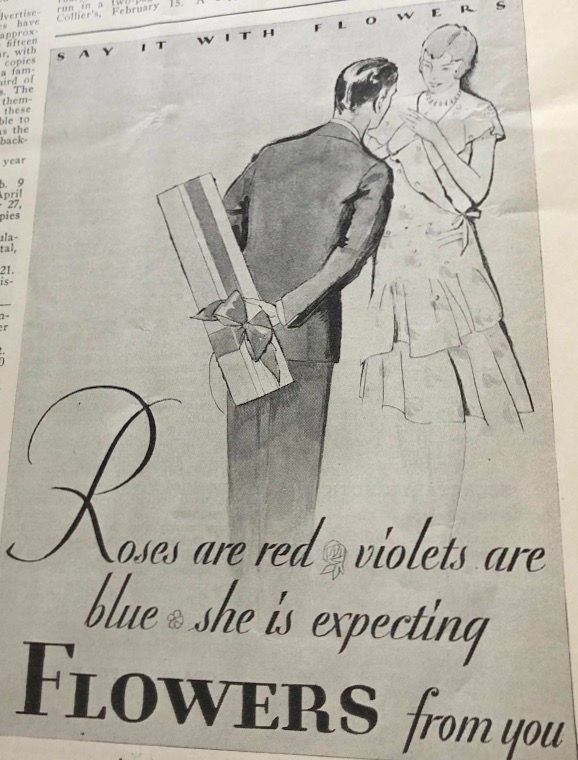
These advertisements linking flowers to femininity and female consumption enabled Valentine’s Day to flourish into a major cut flower holiday. This growth alone was not enough for florists, wholesalers, and growers, however. Marketing efforts continued, and by 1926, the industry reported a thirty-nine percent increase in sales. Valentine’s Day floral gifts would gain yet another push during World War II when the government placed candy and other gift items on ration lists – deeming them essential to the war effort. Flower growers and florists, meanwhile, remained free to market and sell as many flowers as they wanted. This added boost during the wartime years firmly cemented cut flowers as the go-to present to celebrate affection and romance on this day of love.
Since then, Valentine’s Day has grown into one of the largest cut flower holidays of the year. But while Valentine's Day flowers stand as the embodiment of our love and affection, we think little of the flowers themselves beyond their beauty and sentimentality. Where did these flowers come from and how did they get here?
Flowers used to be grown locally, mostly because they needed to reach consumers before they wilted and died. Today, however, the life of a flower is much more transient. Most begin as small blossoms on plants located over 2,000 miles away in Colombia and Ecuador. There, the flowers grow under tightly controlled conditions in sophisticated greenhouses, where extensive heating and lighting systems ensure that they are ready to bloom at the perfect time for Valentine’s Day.
Like in the U.S., Valentine’s Day is huge for the Latin American cut flower industry, with some large flower growers generating 90% of their profits on Valentine’s Day alone. These profits would not be possible, however, without the hard and sometimes dangerous work performed by thousands of extra laborers hired to work 15-hour shifts in the lead up to this day of love.
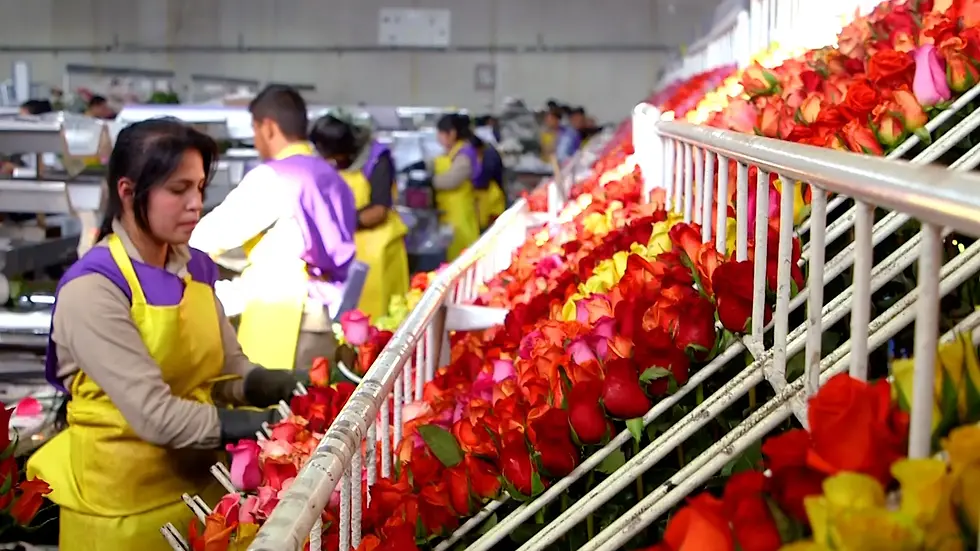
Once in bloom, a worker, usually a young woman, cuts the flower and places it with thousands of others ready to be sorted and packaged into a bouquet. After packaging, the bouquets are placed on large pallets, sprayed with chemical pesticides and preservatives, and wheeled into cold storage overnight. The next morning, workers load the flowers onto refrigerated trucks where they are transported a short distance to the Bogotá International Airport. There, the bouquets are loaded onto a plane for a short, three-hour flight to Miami, Florida where they arrive alongside 1.1. billion other flowers streaming into the U.S. for this day of love.

Upon their arrival in the United States, customs agents search the flowers for two things – illicit narcotics and harmful insects. Once cleared of bugs and drugs, the flowers fan out across the U.S., carted throughout the nation in airplane cargo holds or on refrigerated trucks. Speed is paramount to this whole process, and the international cut flower trade has developed into a remarkably rapid system. Flowers can make this journey from the Colombian greenhouse to a U.S. supermarket in just 48 to 72 hours after they are snipped from the plant.
Yet, in the hustle and bustle of Valentine’s Day, the journey of these flowers often goes overlooked, obscured by red and pink hearts, boxes of chocolate, and sentiments of love. Forgotten even more are the lives of the Colombian women and men who make our Valentine’s Day gifts possible. Recounting the history of this industry, helps to bring these stories to life and shows how something as common as the flowers we love can link together our liveswith the lives and labors of our Latin American neighbors.
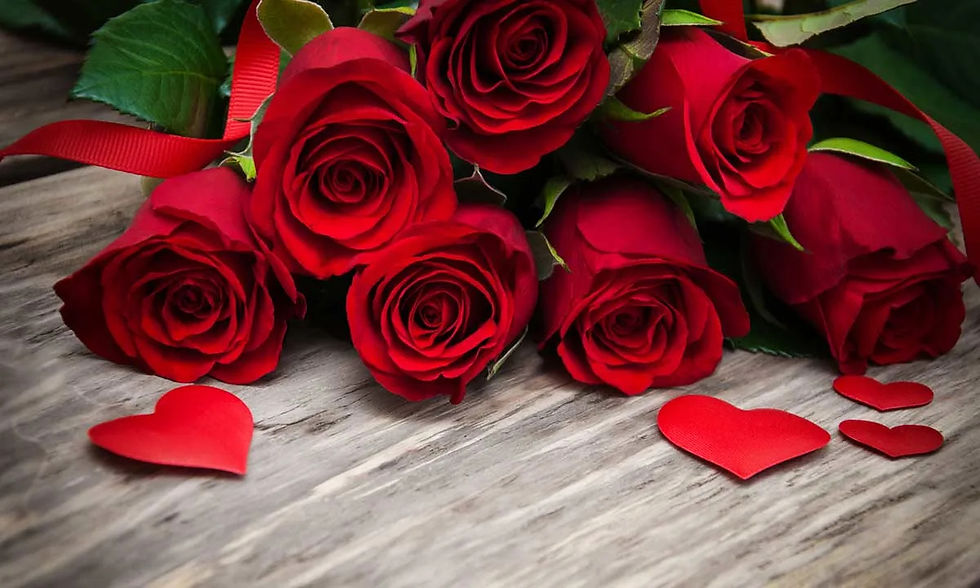
Sources:
A Centennial History of the American Florist. Topeka, KS: Florists’ Review Enterprises, 1997.
Floricultores colombianos preparan plan especial para boom de ventas por San Valentín.” Periodico, Redagrícola, January 22, 2022, https://www.redagricola.com/co/floricultores-colombianos-preparan-plan-especial-para-boom-de-ventas-por-san-valentin/.
Groom, Nick. “Hallowe’en and Valentine: The Culture of Saints’ Days in the English-Speaking World,” Folklore 129, no. 4 (2018): 331-352.
Narishkin, Abby, Barranco Steve Cameron, Marisa Palmer, Victoria,.“How 1.1 Billion Flowers Are Imported and Inspected in the US for Valentine’s Day Each Year.” Business Insider, February 12, 2021, https://www.businessinsider.com/how-11-billion-flowers-imported-inspected-us-valentines-day-2021-2.
Petrovska, Milena. “14+ Valentine's Day Sales Statistics 2022.” Balancing Everything, January 6, 2023. https://balancingeverything.com/valentines-day-sales-statistics/#:~:text=Americans%20spent%20%2421.8%20billion%20on,gifts%20for%20spouses%20and%20partners..
“Say It With Flowers on St. Valentine’s Day.” The American Florist 50, no. 1548 (February 2, 1918). The "Say it With Flowers" image proved popular and found a large circulation, appearing in newspapers across the U.S. for many years. For examples, see “Say it with Flowers.” The Ithaca Journal, 13 February 1920. “Say it with Flowers.” The La Crosse Tribune (La Crosse, Wisconsin), 13 February 1920. “Say it with Flowers.” The Ithaca Journal, 12 February 1923.
Image Sources:
Sharp, Jo Ellen Meyers. “Not Just Roses! Best Valentine's Day Flowers for Everyone on Your List.” 1800Flowers Petal Talk. 1-800-Flowers.com, January 20, 2023. https://www.1800flowers.com/blog/celebrate-occasions/best-valentines-day-flowers-for-everyone/.
Temple, Emily. “You Can Blame Geoffrey Chaucer for Valentine's Day.” Literary Hub, February 28, 2020. https://lithub.com/you-can-blame-geoffrey-chaucer-for-valentines-day/.
“Wilsons For Flowers.” The American Florist 46, no. 1446 (February 19, 1916).
“Say It With Flowers on St. Valentine’s Day.” The American Florist 50, no. 1548 (February 2, 1918).
“National Publicity Activities: Outline of S. A. F. and O. H. Advertising Program Which Will Educate the American Public Into Greater Flower Consciousness.” The American Florist 72, no. 2168 (January 4, 1930): 13, 19.
Narishkin, Abby, Barranco Steve Cameron, Marisa Palmer, Victoria. “How 1.1 Billion Flowers Are Imported and Inspected in the US for Valentine’s Day Each Year.” Business Insider, February 12, 2021, https://www.businessinsider.com/how-11-billion-flowers-imported-inspected-us-valentines-day-2021-2.
“CBP Works to Ensure Valentine's Day Flowers Are Pest-Free.” U.S. Customs and Border Protection. U.S. Department of Homeland Security, February 3, 2022. https://www.cbp.gov/newsroom/national-media-release/cbp-works-ensure-valentine-s-day-flowers-are-pest-free.
Bull, Megan. “14 Best Valentine's Day Roses to Surprise Your Loved Ones.” HELLO! HELLO!, February 7, 2023. https://www.hellomagazine.com/homes/20210114104605/best-roses-valentines-day/.


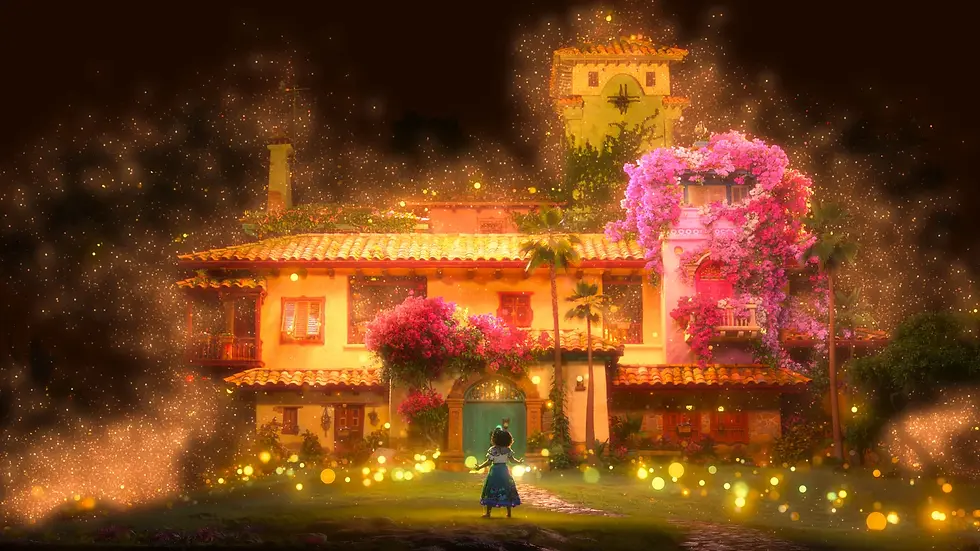
Comments